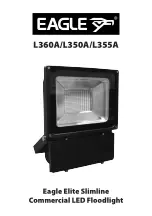
16
X-Cite
®
120PC Q User Guide
035-00328R rev. 4
5.2.6 Never leave an endcap on the output end of the light guide when the other end is
connected to the X-Cite unit; if the unit is turned on in this condition, the cap will
overheat, melt and/or permanently discolour the quartz end of the light guide.
5.2.7 While the X-Cite unit is on but not in actual use (i.e. during sample preparation,
or between time-lapse time-points) close the iris/shutter on the X-Cite; this
reduces unnecessary UV photon load on the liquid light guide. (Using only the
shutter/stop in the microscope itself protects the specimen, but energy is still
passing through the light guide.
6
Installing the Collimating Adapter
6.1.1 Ensure that the power is off on the X-Cite
®
120PC Q unit.
6.1.2 The existing lamp housing must be removed from the microscope before the
collimating adapter can be mounted. Do not discard the existing mounting
hardware, since it will be used to secure the collimating adapter to the
microscope.
6.1.3 Remove the collimating adapter from its packaging.
6.1.4 Insert the flange portion of the collimating adapter into the lamp port of the
microscope. Using the existing hardware, tighten the screw(s) until the flange is
fully secured.
6.1.5 Remove the protective cap from the output end of the light guide. Insert the light
guide into the input portion of the collimating adapter until it is flush with the
adjustable insert. Secure the light guide to the collimating adapter by tightening
the thumbscrew. Do not over tighten.
Note:
The collimating adapter has been set at the factory. No adjustments by
the customer are required.
Note:
The installation of the collimating adapter will vary with microscope
models.
Note
: The light guide has a minimum bend radius of 1.6 inches (40.0mm).
Bending or coiling the light guide tighter than this radius will result in
permanent damage to the light guide.
















































